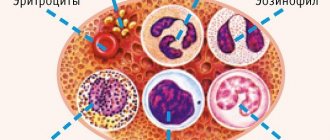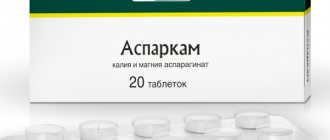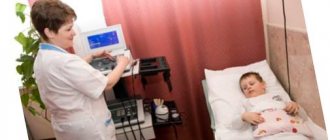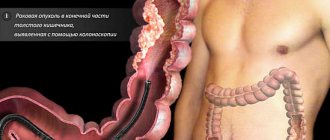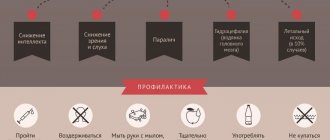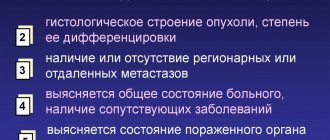Operating principle of the device
An electromagnetic device emits rays that have the following effects on the human body:
- changes in cellular structure at the physical and biochemical level;
- heating of tissues, as high-frequency rays gradually turn into thermal radiation.
The UHF device has the following components:
- a generator that produces high-frequency radiation that is active against most tissues of the body;
- electrodes (they have special plates and act as a conductor);
- inductors (these devices are responsible for generating a specially tuned magnetic field);
- emitters of electromagnetic waves.
For stationary exposure the following types of devices are used:
- "UHF-300";
- "Screen-2";
- "Impulse-2";
- "Impulse-3".
UHF therapy can also be carried out using portable devices. The most commonly used:
- "UHF-30";
- "UHF-66";
- "UHF-80-04".
Devices for ultra-high-frequency therapy differ in power. Thus, UHF-5 devices and their analogues, UHF-30 and the like have low indicators (up to 30 W). Average power (up to 80 watts) is developed by such devices as the UHF-66 or 50 apparatus of the “Mouth” and “Undaterm” types. Devices of the Ekran-2, UHF-300, etc. series have high power, that is, over 80 W. Today, various devices are used that can operate in pulse mode. The mechanism of action of all such devices is similar.
Massage
This procedure is one of the simplest and most accessible. Tapping with fingers and rubbing can improve blood circulation, dilate the bronchi and stimulate coughing. The session lasts 5-10 minutes. To do this, use warm oil. The course includes 5 or more sessions.
Light and proper massage is considered absolutely safe. Its advantage is that the impact is only external. Complications such as allergies and individual intolerance are excluded. No special equipment required. Therefore, this is an excellent method of physical therapy for bronchitis at home. In children and adults, recovery occurs faster with this procedure.
When are UHF procedures indicated?
Various factors are taken into account before prescribing such treatment:
- age (as a rule, for children the duration of warming up is proportionally reduced);
- course of pathology;
- general health of the patient;
- the presence of concomitant diseases (some of them may have contraindications).
UHF is often prescribed for inflammatory processes in the body. This is especially true for acute lesions. During such illnesses, blood cells and infiltrate accumulate in the sore spot. Under the influence of high-frequency inflammation, it dissolves faster, which is why the symptoms of inflammation pass faster.
It is possible to use a UHF-66 or other device for purulent processes. However, in this case, the use of UHF is justified and permissible only when there is a channel for draining the infiltrate. So such an indication does not mean that the patient will necessarily undergo such therapy. The general indications for physiotherapy are as follows:
- pathologies of the upper respiratory tract;
- ENT diseases;
- diseases of the heart and blood vessels;
- digestive pathologies;
- diseases of the urinary and reproductive system;
- dermatological pathological processes;
- various disorders of the central nervous system;
- dysfunction of the musculoskeletal system;
- eye diseases, especially of infectious and inflammatory origin;
- dental diseases;
- recovery period after surgery.
Contraindications
Not every patient is suitable for treatment of existing ailments with UHF therapy. Like any other physiotherapy, this procedure cannot be used for diseases presented by:
- Oncology, mastopathy, fibroids.
- Poor blood clotting and some vascular diseases.
- Thyrotoxicosis.
- Low blood pressure.
- Heart attack and heart failure.
- High temperature.
- Bearing a fetus.
In addition, if the patient has metal implants, such as a pacemaker or dental crowns, he should inform the attending physician and the physical therapist who will perform the procedure. Perhaps this factor will become a contraindication for the session. It is for this reason that treatment with UHF therapy should be resorted to only if the therapeutic method has been prescribed by a doctor.
Mechanism of action in various diseases
Depending on when UHF physiotherapy is prescribed, its effect on the human body is different:
- In case of pathologies of the respiratory system, high-frequency radiation leads to rapid inhibition of the activity of pathogenic bacteria. The UHF therapy device has an immunorestorative effect on the human body; it kills a large number of pathogenic microorganisms. This creates good conditions for the healing of diseased areas of these organs.
- For hypertension and other pathologies of the heart and blood vessels, this device improves central and peripheral blood circulation. The contractile activity of the heart muscle increases significantly. Improving vascular tone, in turn, helps reduce the intensity of inflammatory processes in the body.
- The choice of UHF therapy in the treatment of the digestive system is explained by the fact that it helps strengthen the immune system and tissue activity. Physiotherapy also has a pronounced analgesic effect. That is why it is often prescribed for acute cholecystitis, pancreatitis, inflammation of the small or large intestine. Under the influence of high-frequency radiation, healing of ulcers and other pathologically altered areas occurs. Accordingly, all inflammatory processes in the gastrointestinal tract proceed more easily, and recovery occurs much faster.
- UHF treatment is also used for inflammatory phenomena in the genitourinary system. Blood supply to affected organs of the body improves, swelling and inflammation decrease.
- UHF prevents the development of purulent lesions of the skin and mucous membranes. This is especially true in cases where the inflammatory process is in an acute purulent phase. Due to the pronounced bactericidal effect, the effectiveness of the negative phenomenon decreases. The protective function of the skin is also stimulated, which is why the inflammatory process goes away very quickly.
- Ultra-high background electromagnetic radiation is also used for the treatment of major nervous pathologies. UHF inhibits processes in the central nervous system that lead to pain syndromes. Due to the significant improvement in blood circulation processes, the nervous tissue is restored faster and the recovery period is thus significantly accelerated. As a result, in some clinics the treatment of radiculitis, osteochondrosis, osteoarthrosis and other similar pathologies using UHF devices is the main thing.
- It has been proven that high UHF frequency improves metabolic processes in the membranes of the eye. This way it is possible to reduce the intensity of inflammatory processes in the membranes of the organs of vision and significantly improve their functionality. Some patients note that after UHF their vision improves. This can be explained by the fact that the intensity of metabolic processes in the membranes of the eye increases and blood circulation improves.
To clarify the need for UHF, the doctor may need to decipher some examinations (for example, ultrasound, MRI, etc.).
Ural Federal District
Physiotherapy for bronchitis in a clinic can be performed in the form of ultraviolet radiation. Ultraviolet rays have an immunostimulating, bactericidal effect. Ultraviolet irradiation of the chest helps in the treatment of viral and bacterial respiratory ailments.
After physical treatment, repair processes are activated in children and adults. In the presence of bronchitis, this is necessary for the rapid restoration of the mucous membrane of the respiratory tract and normal functioning. Irradiation is performed from the 1st day of illness, and the neck, sternum, and interscapular part are captured.
Sessions should be performed daily, just remember to alternate the front and back surfaces. In the case of an acute form of the disease, the course is equal to 4 procedures, and in a chronic form, for complete recovery they must be carried out up to 12.
How is the procedure performed?
To carry out the procedure, wooden furniture is used. Usually the patient sits or lies, depending on where exactly the affected area of the body is located. Some patients think that such an examination involves removing clothes. This is not true: a person does not have to undress. UHF radiation can even penetrate bandages.
The doctor chooses the most convenient and necessary electrodes for the patient (their sizes vary depending on the size of the diseased area of the body). The plates are fixed in the holder and wiped with an ethanol solution. After this, they can be brought to the affected area. The electrodes can be installed in a transverse and longitudinal arrangement.
With the transverse installation method, they are located opposite each other. One plate is on the painful area, and the second is on the opposite side. The UHF device distributes electromagnetic radiation throughout the body. It is necessary to maintain a minimum distance between the electrode and the human body (no more than 2 cm).
With the longitudinal installation method, the elements are placed only on the affected area. This use is preferable provided that a small part of the body is damaged. With a longitudinal installation scheme, electromagnetic waves penetrate to insignificant depths. And the closer the electrode plate is to the skin, the stronger the thermal effect. An electrode cannot be placed directly on the skin, as this can cause a severe burn.
The doctor must adjust the device, supplying the required amount of electromagnetic radiation. For this there is a scale that sets the power in watts. There are 3 types of UHF dosages:
- athermic (less than 40 W) - has a mainly anti-inflammatory effect;
- oligothermic (less than 100 W) - improves cellular metabolism, nutrition of organs and tissues with blood;
- thermal (over 100 W) - rarely used, as it has some contraindications.
Indications
Physiotherapy is used to treat:
- paresis;
- paralysis;
- diseases of the articular-ligamentous apparatus of the skin;
- respiratory organs;
- metabolic disorders.
According to reviews, this treatment for bronchitis has a positive effect. The main thing is that all procedures are selected by a specialist. An integrated approach is still needed.
Decoding the results
Depending on the dosage chosen, the following changes may occur in the human body:
- the phagocytic activity of white blood cells increases, they begin to fight pathogens of dangerous diseases;
- the degree of exudation activity decreases, that is, the penetration of effusion into the tissue due to a drop in the intensity of inflammatory processes;
- fibroblasts are activated (they are responsible for the formation of connective tissues in the body);
- the permeability of capillary walls increases;
- Metabolic processes in all tissues and organs are stimulated.
The scheme for using UHF treatment is, in most cases, standard. The duration of the procedures does not exceed 15 minutes (and sometimes less). Warming up will be effective if it is done every day (or every other day). The duration of treatment is determined by the doctor. The duration of therapy will be individual in each case.
Methodology
To prevent the treatment process from becoming an exciting procedure for you, you should first familiarize yourself with the progress of the treatment.
The technique implies the following points:
- The patient or part of his body is placed on a wooden surface - usually a simple couch or chair.
- Plates with capacitors are selected according to the expected area of influence on the body.
- The plates are arranged transversely or longitudinally with a minimum gap. This avoids unwanted energy distribution outside the impact site.
- Select the required force of influence, which is divided into 4 categories. The patient feels each of them differently: without a feeling of warmth (1st stage), a slight feeling of warmth (2nd stage), a distinct feeling (3rd stage) and a pronounced feeling of warmth (4th stage). Each disease requires a specific regimen of use.
- Having selected the necessary parameters, continue influencing the pathological focus for 10–15 minutes.
- Repeat the procedure daily or every other day 10–15 times.
Side effects
In some cases, UHF treatment may be associated with certain side effects in the body. These include the following:
- Skin burns - occur mainly due to the fact that the doctor used wet pads during the procedure. The same happens if the electrodes come into contact with the skin.
- If EHF is used before surgery, the risk of bleeding increases significantly. Increased bleeding can also occur in tissues directly irradiated by high-frequency waves.
- Scars appear because high-frequency rays stimulate the development of connective tissue. In some cases, for example after abdominal surgery, such treatment is not recommended.
- In rare cases, electrical shock may also cause tissue damage. This often happens if the patient does not follow safety rules and comes into contact with exposed wires of the devices.
Electrophoresis
This type of physiotherapy for bronchitis in adults can enhance the effect of medications and speed up recovery. The method is based on the interaction of electric current with the drug administered to the patient. This session improves the result of treatment for acute and chronic forms of bronchitis.
For COPD (chronic obstructive pulmonary disease), electrophoresis with aminophylline is often prescribed for children. The session is completely painless and well tolerated. Some parents have doubts whether electrophoresis can be performed during a cough. This procedure is effective and safe, it facilitates the removal of mucus and the expansion of the airways.
Inhalations
According to reviews, this is an equally effective method of treatment. It can also be used at home. In addition to the bronchodilator effect, inhalations have an antibacterial and expectorant effect. This type of physiotherapy is suitable for pregnant women and children.
Today there are many steam inhalers and nebulizers. Liquid components can be:
- herbal infusions and oils;
- medical solutions;
- mineral water.
Herbs include chamomile, calendula, and sage. Before such procedures, you need to check your susceptibility to allergies. Sodium chloride is often used in medical solutions.
Complex physiotherapy
In complex physiotherapy, several techniques are used that enhance each other’s effect. This allows you to get quick and high-quality results. Electrophoresis, ultrasound and massage help fight inflammation of the bronchi.
All methods not only have a beneficial effect on the discharge of sputum and restoration of the mucous membrane, but also increase the sensitivity of tissues to other hardware procedures. For example, electrophoresis with bronchodilators or mucolytic agents is performed before a massage course. Such physiotherapy for obstructive bronchitis is considered quite effective.
With an integrated approach, it is important to take into account the individual course of the patient’s disease. Some rules must be followed:
- Only one procedure should be selected as the main one. The rest will be auxiliary, so they cannot burden the body.
- More than 2 procedures are not performed in 1 day. On the first day, various techniques that affect the general condition of the body are not used in order to avoid fatigue.
- Physiotherapy should be postponed during diagnostic measures (probing, tomography).
- Areas with skin erythema should not be irradiated with ultraviolet light.



